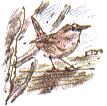
|
ShelterFriday, 10th January 2003, West Yorkshire |
![]()
![]()
![]()
![]() Rocks | History |
Workshop |
Links | Home
Page
Rocks | History |
Workshop |
Links | Home
Page
![]()
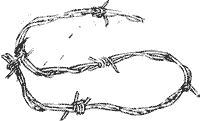 There's an atmosphere about the old Deer Shelter in Bretton Park that
makes me feel that something as commonplace as a twist of barbed wire
lying in the ashes of a fire must have some symbolic significance.
There's an atmosphere about the old Deer Shelter in Bretton Park that
makes me feel that something as commonplace as a twist of barbed wire
lying in the ashes of a fire must have some symbolic significance.
Is it an 'S' for 'shelter' - or for the feeling of being sheltered from the everyday world when you step into this 18th century landscape park?
Or is it 'S' for 'serpent' or 'snake', referring to snakelike currents which, according to the beliefs of a number of cultures around the world, flow through the earth and come to the surface at sacred sites (more 'S's there). These currents are often represented by serpents or dragons in legends and sculpture. On my Britain sketchbook travels, years ago, I sketched a serpent carved on the font at the church at Avebury, Wiltshire, a site that, even for someone as down-to-earth as me, resonates with megalithic mystery.
Perhaps I shouldn't consider myself so far removed from these mysterious currents; telluric currents as they're called, which seems to give them a scientific respectability. My patron saint is St George (I was born on St George's Day the 23rd of April and he has been, since the time of Edward III, the patron saint of England) who is most famously associated with a contest with an allegorical dragon.
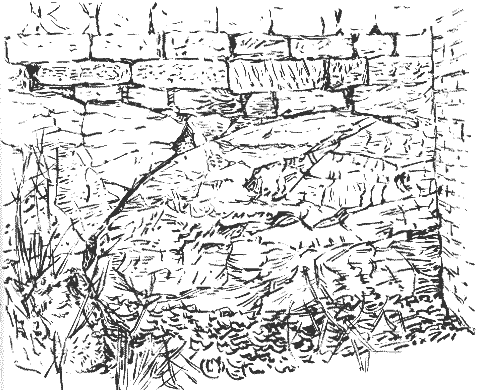
Outcrop
Whether you're sensitive to these telluric currents or not you can't help but be aware of the atmosphere that surrounds the Deer Shelter in its hidden hollow on the hill. Part of it comes from that sense of it being an extraordinarily ancient place, while in fact it's 'only' two or three centuries old. Perhaps there was originally a small quarry here which has been adapted for the practical purpose of providing a winter refuge for the park's fallow deer. There are no deer at Bretton today, save for the odd roe deer that probably wanders through from time to time.
As you can see from my sketch the sandstone is pretty poor here for use as building stone; it's divided by too many fissures and faults. In the corner I've sketched, to the left of the shelter, I like the way the drystone wall, which supports the embanked ground behind it, follows on directly from the rock-face. Layers of rocks shaped by the hand of man follow on directly from their source; beds of sandstone laid down in the delta of a river which ran through a tropical landscape, right here, on this part of the Earth's crust, 300 million years ago.
The Memory of Bricks
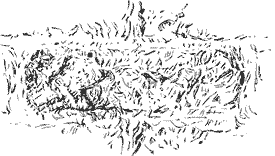 The
passage of time is so much a part of the structure of the Deer Shelter
that I associate its recesses, set in the hillside, with memory; not just
the prehistoric memories present in the substance and structure of the
rock, not just in the record of the skills of the estate workers who built
it. It's as if the brick arches of the shelter were allegories for the
nature of memory; as if each arch was a chamber of memory.
The
passage of time is so much a part of the structure of the Deer Shelter
that I associate its recesses, set in the hillside, with memory; not just
the prehistoric memories present in the substance and structure of the
rock, not just in the record of the skills of the estate workers who built
it. It's as if the brick arches of the shelter were allegories for the
nature of memory; as if each arch was a chamber of memory.
There's the brick itself which might date from the late 18th or early 19th century. Unlike the reliably uniform modern product no two bricks are quite the same. This one is so full of imperfections that the surface has crumbled away to reveal the original terra cotta colouring. I'm guessing by their irregular composition that these bricks might have had grog added to them. Grog is fired clay, or broken pottery, that is added to a clay mix to improve it's performance in firing.
Flowstone
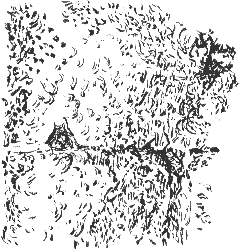 If
the bricks represent the basic building blocks of memory the patina of
the walls would be the effect that time has on our memories. Time flows
on and, here in the shelter, lime-rich water has flowed through from the
soil and brickwork above and created small patches of white flowstone,
just like you'd see, on a larger scale, in a natural limestone cavern.
If
the bricks represent the basic building blocks of memory the patina of
the walls would be the effect that time has on our memories. Time flows
on and, here in the shelter, lime-rich water has flowed through from the
soil and brickwork above and created small patches of white flowstone,
just like you'd see, on a larger scale, in a natural limestone cavern.
I feel that it's like certain memories we have that aren't completely wiped out by later experience but which are seen through a translucent layer of our later experiences which forever colours our perception of the original event.
Rootlets
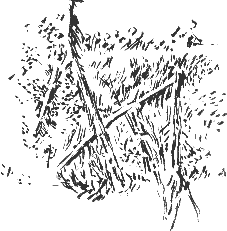 In
some damper, shadier places there are impressions that appear to have
been made by branching roots. Perhaps these were once the rootlets of
the tree, now a dry dead stump, that grew above the central arch of the
shelter.
In
some damper, shadier places there are impressions that appear to have
been made by branching roots. Perhaps these were once the rootlets of
the tree, now a dry dead stump, that grew above the central arch of the
shelter.
I feel that as well as our individual memories we have, deep in our psyches, cultural memories which were probably implanted so early in our childhoods that it's almost as if they'd been there for ever, as if they always were a part of us.
On a deeper level still, on a more primitive level, we are programmed
- hard-wired - with biological memories; instinctive likes and dislikes
which help ensure our survival, or at least they did ensure our survival
at one time; now that we're more insulated from the dangers the natural
world they're probably not of that much use, but there they are; deep
roots still leaving their mark in our chamber of memories.
![]()
![]() Next page | Previous
page | This
day in 2001 | This month |
Nature Diary |
Home
Page
Next page | Previous
page | This
day in 2001 | This month |
Nature Diary |
Home
Page
![]()